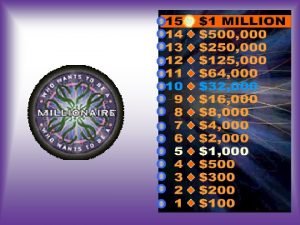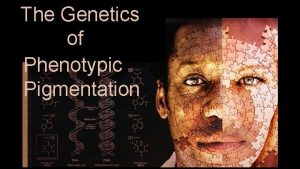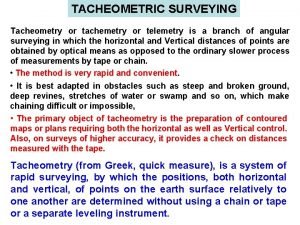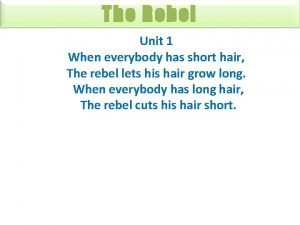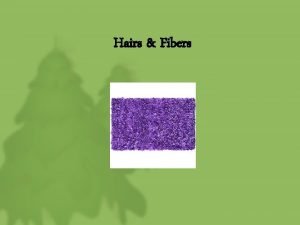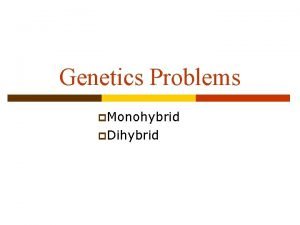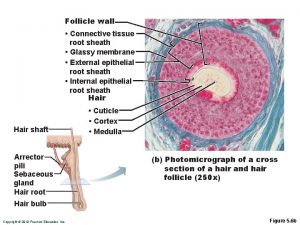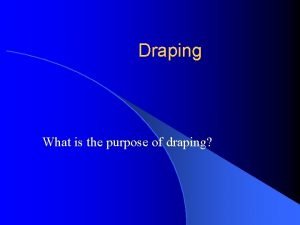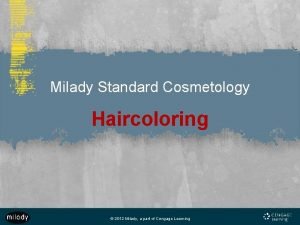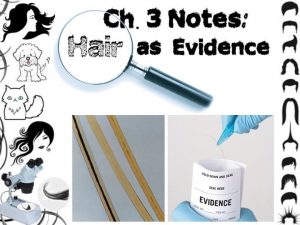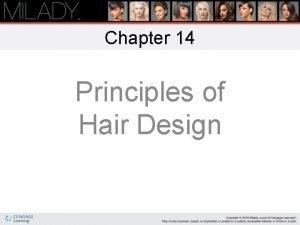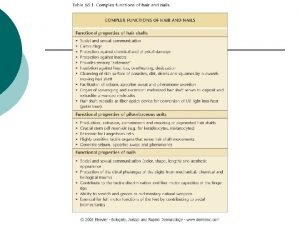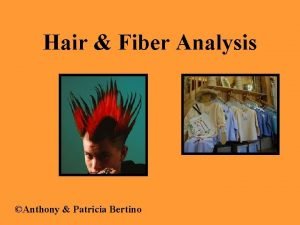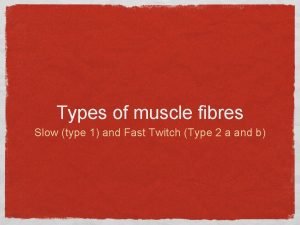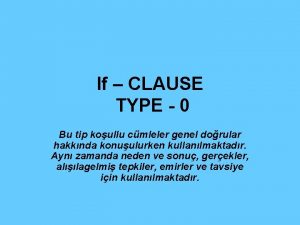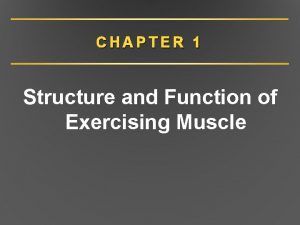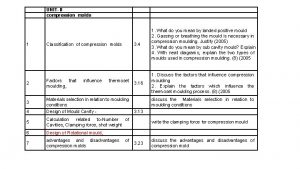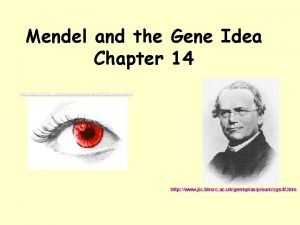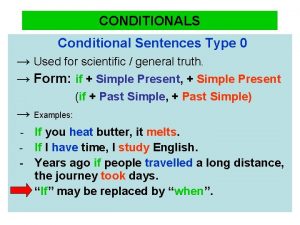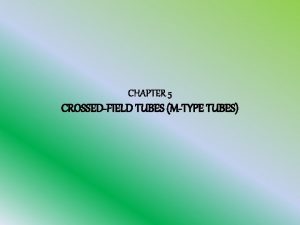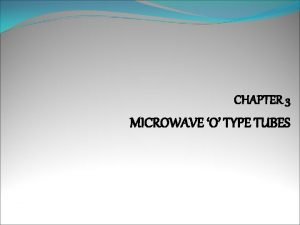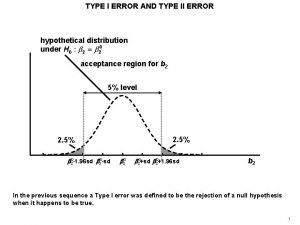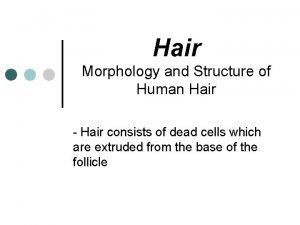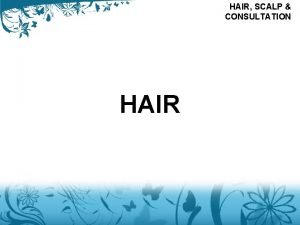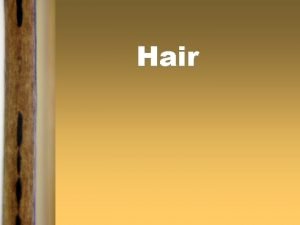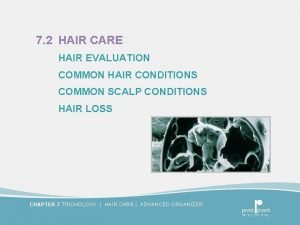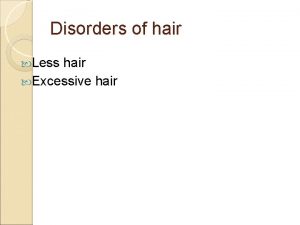Type Topic in here Hair 1 Hair 2




















































- Slides: 52

Type Topic in here!

Hair 1 Hair 2 Fiber 1 Fiber 2 Pollen 10 10 10 20 20 20 30 30 30 40 40 40 50 50 50

Question 1 - 10 • What are the two parts that hair consists of?

Answer 1 – 10 • Follicle and Shaft

Question 1 - 20 • What type of evidence is hair considered?

Answer 1 – 20 • Class evidence

Question 1 - 30 • Identify the cuticle pattern in the picture below

Answer 1 – 30 • Imbricate

Question 1 - 40 • Is the following hair characteristic human or animal? • Pigmentation is denser towards medulla

Answer 1 – 40 • Animal

Question 1 - 50 • On a piece of hair, evidence of toxins were found 10. 4 cm from the root. How long ago did this individual ingest the toxin?

Answer 1 – 50 • 8 months

Question 2 - 10 • What are the 3 layers that make-up a hair shaft? List them in order starting on the outside of the hair going to the farthest inside.

Answer 2 – 10 • Cuticle, cortex, medulla

Question 2 - 20 • What is the largest part of the hair shaft?

Answer 2 – 20 • Cortex

Question 2 - 30 • Identify the cuticle pattern in the picture below

Answer 2 – 30 • Coronal

Question 2 - 40 • List the 3 stages of hair development in order

Answer 2 – 40 • Anagen, Catagen, Telogen

Question 2 - 50 • A hair is found to have a diameter of 65 µm and a medulla diameter of 20 µm. What is the medullary index of this hair

Answer 2 – 50 • 0. 31

Question 3 - 10 • Wool, cashmere, and angora are all examples of what type of fiber?

Answer 3 – 10 • Animal

Question 3 - 20 • A fiber that are very resistant to damage from harsh chemicals and are insoluble in what are what type of fibers?

Answer 3 – 20 • Plant fibers

Question 3 - 30 • What are the two different fiber classifications?

Answer 3 – 30 • Natural and synthetic fibers

Question 3 - 40 • What do all synthetic polymer fibers have in common?

Answer 3 – 40 • Petroleum based

Question 3 - 50 • What are the two most common ways of testing fibers found at a crime scene?

Answer 3 – 50 • Microscope and destructive tests

Question 4 - 10 • Cotton, coir, and hemp are all examples of what type of fiber?

Answer 4 – 10 • Plant fibers

Question 4 - 20 • Fiberglass and asbestos are both examples of what type of fiber?

Answer 4 – 20 • Mineral Fiber

Question 4 - 30 • What do all regenerated fibers have in common?

Answer 4 – 30 • Derived from cellulose

Question 4 - 40 • Fibers can be twisted into what?

Answer 4 – 40 • Yarn

Question 4 - 50 • Monomers in large vats are joined together to create what?

Answer 4 – 50 • Polymers

Question 5 - 10 • Who pollinates plants that have fragrant or showy flowers?

Answer 5 – 10 • Animals

Question 5 - 20 • Gymnosperms and angiosperms are examples of what type of plants?

Answer 5 – 20 • Seed plants

Question 5 - 30 • What part of the pollen grain and spore has a complex and unique structure?

Answer 5 – 30 • The outer shell or exine

Question 5 - 40 • Define pollen fingerprint

Answer 5 – 40 • The number and type of pollen grains found in a geographic area at a particular time of year

Question 5 - 50 • The pollen grain is the reproductive structure of what?

Answer 5 – 50 • Male sex cells of seed plants
 There's a place where streams of grace
There's a place where streams of grace Concluding sentence
Concluding sentence Narrow down the topic
Narrow down the topic No need to run and hide its a wonderful
No need to run and hide its a wonderful Write down your answer here
Write down your answer here Type here
Type here Write text here
Write text here Types
Types Type or paste your text here
Type or paste your text here Type your answer here.
Type your answer here. Your text goes here
Your text goes here Insert your photo here
Insert your photo here Enter your title
Enter your title Dark hair and blonde hair parents
Dark hair and blonde hair parents Uses of tacheometric surveying
Uses of tacheometric surveying When everyone likes dogs the rebel likes
When everyone likes dogs the rebel likes Hair grows in diagonal tubes called hair
Hair grows in diagonal tubes called hair The most prevalent plant fiber is:
The most prevalent plant fiber is: Heterozygous tabby x stripeless
Heterozygous tabby x stripeless Glassy membrane
Glassy membrane Canities
Canities Chemical drape
Chemical drape Predisposition test milady
Predisposition test milady Middle layer and largest part of the hair shaft in humans
Middle layer and largest part of the hair shaft in humans What are the five elements of hair design
What are the five elements of hair design Lanugohair
Lanugohair Mongoloid
Mongoloid Is hyper v type 1 or type 2
Is hyper v type 1 or type 2 Order of recruitment of muscle fiber types
Order of recruitment of muscle fiber types Type 1 or type 2 error statistics
Type 1 or type 2 error statistics Type 2 vs type 1 error
Type 2 vs type 1 error Rock cycle
Rock cycle Mr. p
Mr. p Latent fixation
Latent fixation Myotonic dystrophy
Myotonic dystrophy Deflection type instruments
Deflection type instruments If cümleleri type 0
If cümleleri type 0 Hypothesis testing meaning
Hypothesis testing meaning Example of hypothesis
Example of hypothesis Type checking in compiler
Type checking in compiler A and b blood type offspring
A and b blood type offspring Type 1 vs type 2 fibers
Type 1 vs type 2 fibers Hit type 1 vs type 2
Hit type 1 vs type 2 Bulk factor in compression moulding
Bulk factor in compression moulding Blood type and body type
Blood type and body type Pot type mold & plunger type mold are the classification of
Pot type mold & plunger type mold are the classification of If type 0
If type 0 Name type compatibility and structure type compatibility
Name type compatibility and structure type compatibility Hull cut off equation for cylindrical magnetron
Hull cut off equation for cylindrical magnetron O type microwave tubes
O type microwave tubes Reference type and value type
Reference type and value type Type type revolution
Type type revolution Type 1 error
Type 1 error




